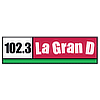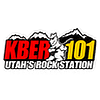How to Survive a Car Accident in Utah?
After a crash in Utah, get safe, call 911, check for injuries, stop heavy bleeding, move drivable cars out of traffic, photograph the scene, swap info, see a doctor within 24 to 48 hours, and call a local attorney for guidance.
There is nothing more confusing or loud than a crash. You feel your heart racing. You feel your hands shake. Using this blog written in guide form, you will be able to follow a clear path in Utah. You will learn what to do in the first minute, what to say to police, when to move your car, and how to protect your health and your claim.
You will also see Utah-specific facts that matter, like the $3,000 PIP rule and the state’s fault system. Take a breath. Work the steps.
Key things you should know
- Stop, breathe, scan for hazards first
- Call 911 early and speak clearly
- Move drivable cars out of traffic
- Do not move badly injured people
- Press hard to control major bleeding
- Take wide and close photos of everything
- Swap info and collect witness contacts
- Keep a simple recovery journal daily
- Call a trusted local injury lawyer
The first 60 seconds: the moves that matter most
Scan for danger. Look for fast traffic, fire, smoke, leaking fuel, and downed lines. Turn on hazards. Placing triangles far back will give drivers time to slow down.
Shut the car off. Press the brake and shift to park, then shut off the engine. If airbags deployed, they may be hot. Keep kids away from hot parts and broken glass.
Check people. Ask if anyone has chest pain, trouble breathing, heavy bleeding, or head, neck, or back pain. Do not guess. If someone is trapped or in severe pain, keep them still unless the car is on fire or traffic is bearing down.
Immediately decide whether to move. If nobody is badly hurt and the cars still run, Utah Highway Patrol urges drivers to move off the freeway. It is legal, it does not affect fault, and it helps prevent a second crash.
Call 911: how to talk so help gets there faster
Lead with location. Road name, direction, nearest exit or mile marker. Utah dispatchers use those details to send the right crew fast.
Share the count of cars and injuries. Add risks, like a motorcycle on the ground, a child in a car seat, a trapped driver, pets in a car, smoke, or fuel leaks.
Provide facts in short answers to questions. Whenever you are unsure of an answer, tell the person. The dispatcher may ask you to press on a bleeding wound. Or to keep people out of traffic until the patrol arrives.
Utah state protects its people who give good-faith aid during emergencies through its Good Samaritan law. This lets bystanders feel safer lending a hand while waiting for medics. It protects good faith helpers, except when they cause an emergency.
Help injured people safely without causing more harm
To stop heavy bleeding: Apply a cloth or gauze to the wound and press hard with both hands. Hold steady pressure. Blood may soak through, so add more cloth and keep pressing. A tourniquet on an arm or leg can save a life when bleeding does not stop, but only if you know how to use one. First aid groups teach this method as a core skill.
Possible head injury: Watch for headache, confusion, dizziness, nausea, or memory gaps. These can show up late. The CDC notes that early care and follow-up help recovery from concussions.
Spinal risk: People suffering from severe neck or back pain should not be moved except in the case of fire or other immediate danger. Hold them still and keep them warm until the medics arrive.
Move it or not: Utah scene rules most drivers miss
If your car still runs and injuries are minor, Utah Highway Patrol asks drivers to get out of traffic. On freeways, they often direct drivers to exit and meet the trooper off the roadway. It keeps you and first responders safer, and it does not decide fault.
Police reports are filed for qualifying crashes. Utah’s crash manual cites the state rule: reports are required when there is injury, death, or total property damage that appears to be $2,500 or more, and officers must submit reports within 10 days after finishing the investigation.
If you are not sure whether your crash needs a report, call 911 and follow the dispatcher’s guidance. Utah Code also addresses operator and officer report duties after qualifying accidents.
What to photograph: take wide shots of the scene, lanes, skid marks, signs, signals, and debris. Then take close shots of plate numbers, damage, restraints, car seats, and any visible injuries. Note weather, time, and traffic.
See a doctor fast, even if you feel fine
Adrenaline masks pain. That is why people say they felt fine at the scene, then woke up stiff and foggy. Get checked within 24 to 48 hours. Tell the provider you were in a motor crash. Be sure to get written instructions. Also note any warning signs.
Always keep every visit summary, test result, and bill in one folder. If symptoms get worse, return to care.
Start a simple daily log. Write pain levels, missed work, sleep changes, and tasks you cannot do. That record helps your doctor adjust care and helps any claim later.
The proof you need: photos, notes, and witness details
Think like this: if someone who was not there reads your notes, can they picture the scene? Take these steps:
- Scene overview, lanes, signs, and signals
- Car damage from all corners
- Close-ups of seat belts, airbags, and child seats
- Swelling, bruising, or cuts
- Debris on the road, skid marks, road hazards
- The other driver’s license and insurance card
- Names and numbers of witnesses
Ask the officer for the case number. Later, you can order the report through the state portal. Utah’s crash manual explains how officers file reports and the damage categories they use, including the $2,500 benchmark.
When fault matters in Utah: the 50% line
Utah uses modified comparative negligence. Depending on your level of fault, your recovery may be reduced. A party who is 50% or more at fault cannot obtain compensation from the other party. This rule can decide cases, so proof matters. A car accident Utah lawyer can help gather photos, witness statements, medical proof, and repair data that show what really happened.
This is why details at the scene matter. Lane lines, debris fields, and time-stamped photos help. So do early medical notes that link your symptoms to the crash. Keep copies. Back them up.
Deadlines: Many Utah injury claims from car crashes must be filed within four years, but some claims have shorter limits. Government-related crashes can have strict notice rules. Protect yourself by speaking with counsel early.
Contact the best car accident injury attorney in Utah: why many folks call Chris Cockayne at Cockayne Law
After you get medical care and your scene is stable, call a lawyer who handles crashes every day. Many Utah families choose Chris Cockayne and his team at Cockayne Law. The reason is that they focus on injury cases and keep the process simple. They offer free consultations, serve the Salt Lake area and beyond. They help with car, truck, motorcycle, and pedestrian cases. You can call, send photos, and get next steps without pressure.
Here is what sets them apart. They listen first. They explain Utah’s no-fault rules, the 50% fault line, and what proof helps most in your claim. They collect records, deal with adjusters, and keep you updated. If you want the best car accident attorney utah for your situation, ask Chris what the first move should be. If meeting in person is hard, they can talk by phone and get you moving the same day.
Final thoughts
A simple plan beats panic. Get safe. Call 911. Help others only as far as you can do it safely. Move drivable cars out of traffic when you can. Take photos. Swap info. Make an appointment with a doctor within a couple of days, and make sure you keep a clean paper trail.
If fault is disputed or calls from insurers feel pushy, talk with a car accident utah lawyer who knows these roads and rules. If you want a local team that focuses on injury work, reach out to Cockayne Law and ask your questions. Your next step can be the right one.
FAQs
Should I move my car after a minor crash?
Yes, if it is drivable and nobody is seriously hurt. Utah Highway Patrol urges drivers to move off the freeway and call 911. It is safer and does not affect fault. If moving is risky, stay clear and wait for help.
Do I have to report the crash?
Crashes with injury, death, or apparent property damage of $2,500 or more are reportable. Officers submit reports within 10 days after finishing an investigation.
Will my own insurance pay first in Utah?
Yes. Utah’s PIP pays first for injury care, with a minimum of $3,000. You can step outside no-fault when medical costs reach the threshold or other conditions apply.
The other insurer wants a recorded statement. What now?
You can wait. Keep it short and factual when you do speak. Do not guess. It is okay to call back after you review notes or speak with an attorney. If you feel pressured, say you will respond after you get advice from counsel.
How do I get the crash report?
Ask the officer for the case number at the scene. In Utah, officers submit qualifying crash reports to the state. You can request a copy through official channels after it is filed. The state crash manual explains how officers report and the damage categories used.
When should I call a lawyer?
Call early if there are injuries, if fault is unclear, or if claim calls feel pushy. A best car accident attorney Utah can protect your rights, gather proof, and handle insurers while you focus on healing. If you want a team that does this daily, reach out to Cockayne Law.









